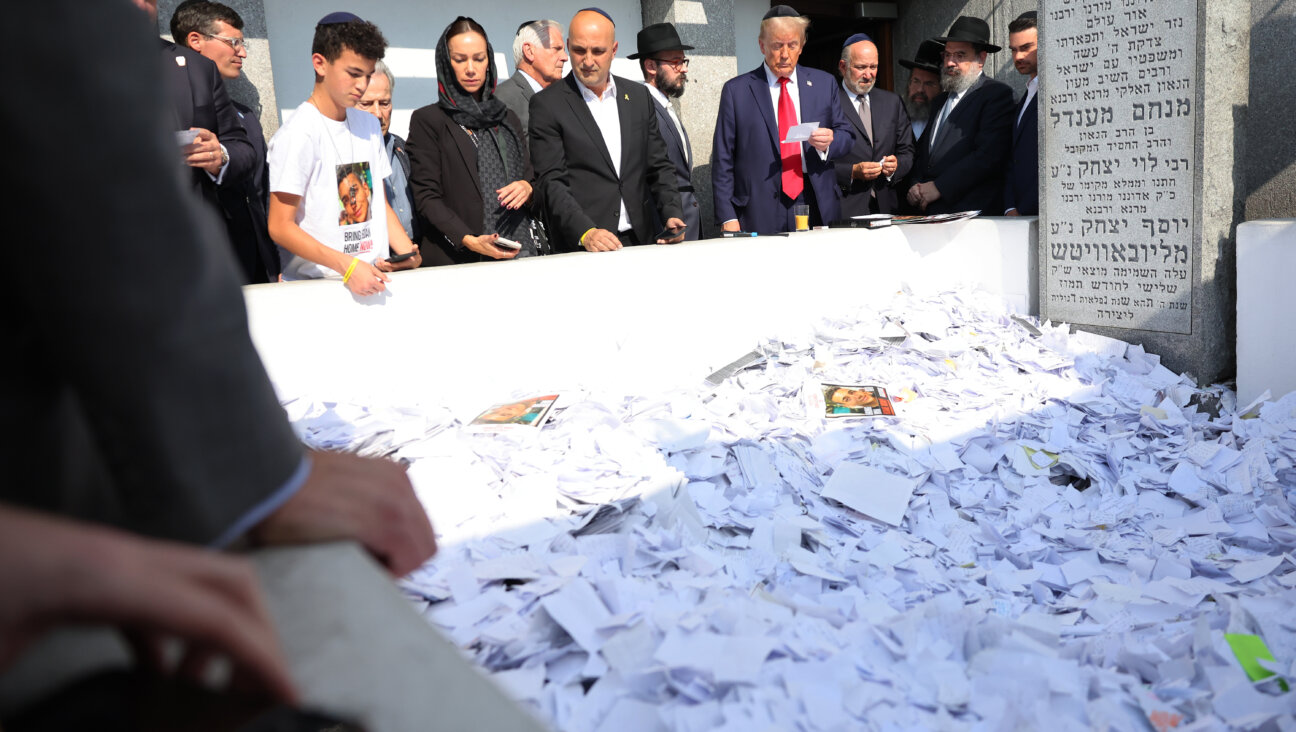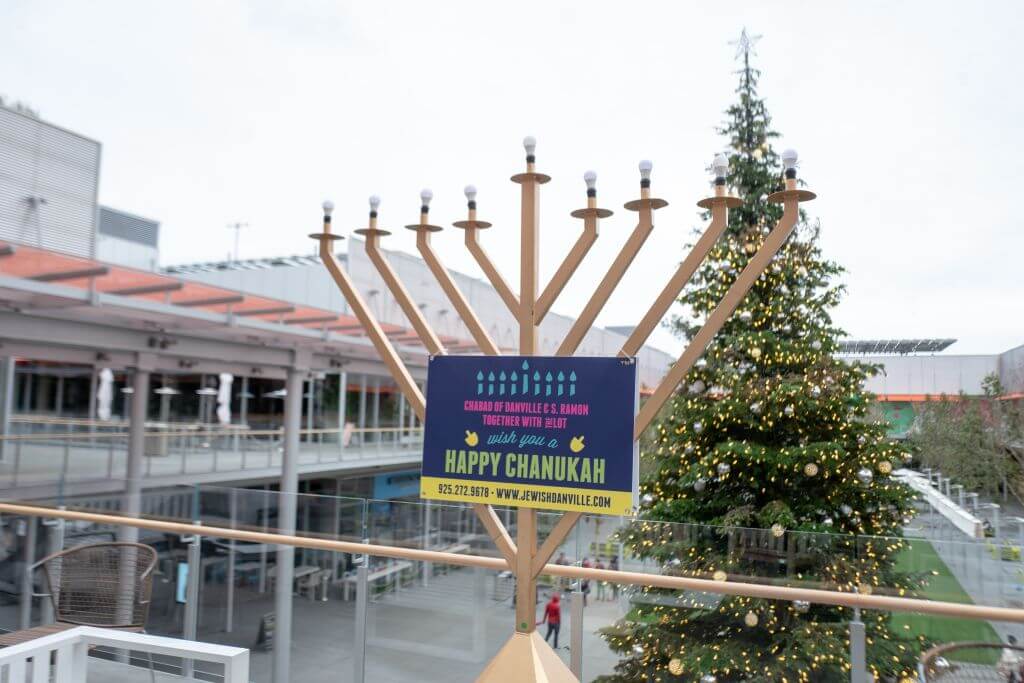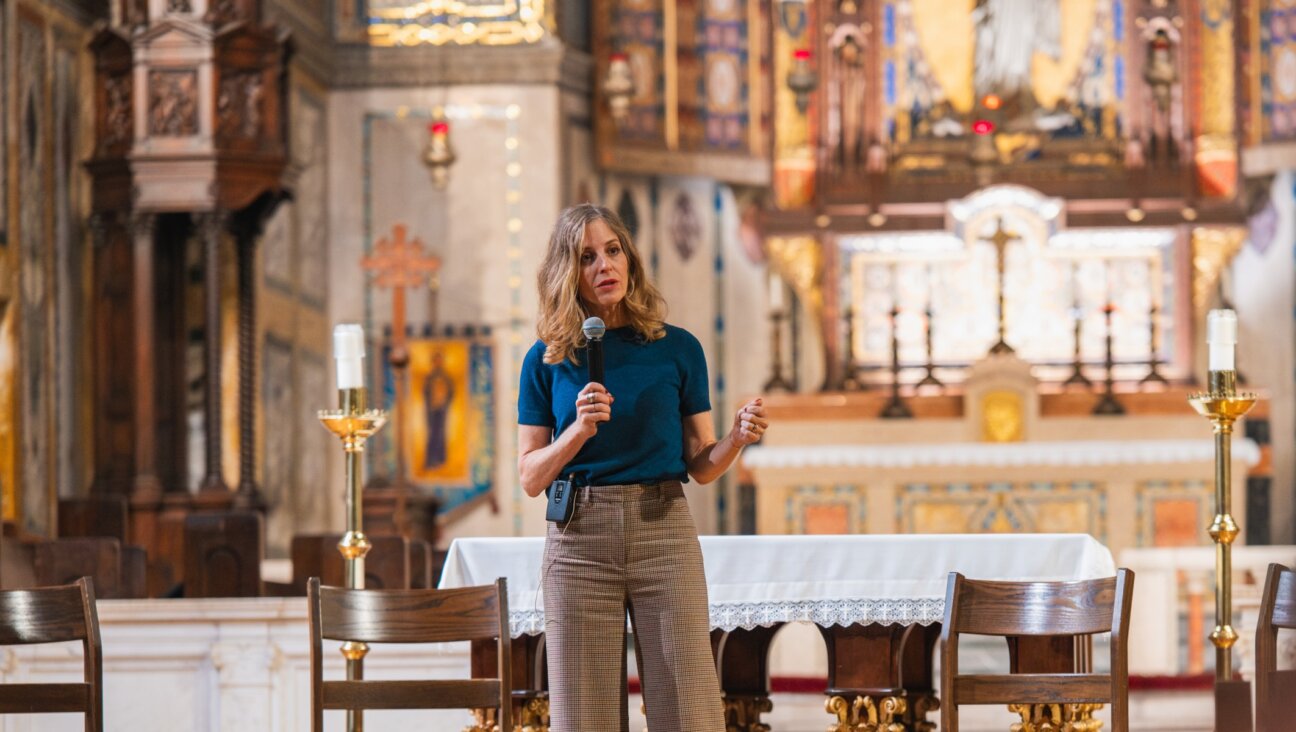Alaska Honors Ruth Gruber
KATYN — WAJDA’S SEARING FILM MEMORIAL TO THE MURDER OF POLISH (AND JEWISH OFFICERS) BY THE SOVIETS
Overloaded with Holocaust films? Here’s a change of terror: Comrade Stalin’s signing of the order to slaughter 15,000 Polish officers and intellectuals at Katyn in the spring of 1940. What few know, and what is not articulated in Polish director Andrzej Wajda’s masterful film, “Katyn,” is that there were 438 Jews among the officers, reservists and professionals whom the Soviets executed with a brutality that defies description. From the opening frames, which show fleeing Poles in 1939 colliding on a bridge — some escaping the Germans, others fleeing the Bolsheviks (which, thanks to the Hitler-Stalin Pact, split Poland between the two countries) — I could smell the air, taste the fear and relive my mother’s and my flight to Russian-occupied Byten (now in Belarus) from Warsaw. Wajda, who was 14 when his father perished in Katyn, got it right — the light, the panic, the weather, the confusion, the dissonance and disbelief of what was happening, and the wishful thinking, on the part of the both civilians and the military prisoners, that Britain and France would come to Poland’s aid.
What gives this movie flesh and bone is the wrenching impact that both the German and Soviet occupations have on a cast of indelible characters. These include Anna (Maja Ostaszewska) and her husband, Andrzej (Artur Zmijewski), a captain of the Eighth Uhlan Regiment in Krakow. Neither Anna nor her young daughter, Nika (Wiktoria Gosiwska) can convince Andrzej to flee a Soviet roundup to possible safety. The captain’s father, a professor at Jagiellonian University, heeds the Nazis’ order to appear at the university with his colleagues, assuming it will be a civilized encounter, only to be brutalized and carted away in trucks to Saschsenhausen, or swept up in the cauldron of Nazi-Soviet enslavement. In Emanuel Ringelblum fashion, Andrzej keeps a diary of everything he witnesses — from the moment his unit is sent off by train; to incarceration in a church; to the final, gory execution of the Polish POWs who, until the very end, have no inkling of what horrible fate awaits them.
What made this film particularly difficult for me to watch was how it paralleled what my mother and I experienced between September 1939 — the occupation of, and our flight from, Warsaw — through February 1941, and our departure to Japan from Soviet-occupied Vilno. In the film, Anna is told that the wives of Polish officers are the first to be arrested. She and her daughter hide with her sister-in-law. The day after my father’s August 29, 1940, arrest by the NKVD (Stalin’s secret police, the precursor to the KGB), my mother and I “disappeared” and went into hiding with a cousin at 9 Universitetska Street, across from the University of Vilno (the house is still there). A distributor of pianos and harpsichords, the cousin hid my mother and me in a room behind a piano. We would knock on the door, the piano would be moved and we would come out. Like Anna, who had a protector — a Soviet captain who, when Russian officers come to arrest her, hides Anna and her daughter in a closet — we were lucky. The Soviet officers who commandeered the apartment took a liking to me: The name Masha did not hurt, and I reminded one of them of his daughter. I was sent out daily to stand in line and buy Lithuanian butter, which their wives fried with onions, put in jars and shipped back to the Soviet Union. They did not know that my mother and I would go stand outside Lukishki prison in the hope of getting a message to my father, an anti-Communist who might or might not have still been there. Like Anna, we would not know until the end of the war if my father survived Soviet imprisonment. Not until Israel’s prime minister, Menachem Begin, came to the United States in 1978 for the Camp David Accords did I learn that he and my father had shared the same Lukishki prison cell. In his memoir, “White Nights: The Story of a Soviet Prisoner,” Begin describes their prison friendship, how the two organized a hunger strike (against kasha) and their interrogations.
But what nagged at me was that I remembered that Jewish officers had also been executed at Katyn. I called Michael Berkowitz, chairman of the New York Region of the North American Council for the Museum of the History of Polish Jews, and he directed me to Iwona Hoffman, the museum’s director of communications. She sent me an April 2001 article from the Polish-American Cultural Review, in which Simon Schochet wrote an analytical piece, “Attempts To Identify Polish-Jewish Officers Murdered at Katyn.” In it, he states: “Katyn is a tragic chapter in the history of Poland. The officers murdered there were killed without regard to their faith, race or occupation. They were massacred for the sole reason that they wore the uniform of their country and had tried to defend their fatherland in the capacity of soldiers of their nation.” I am particularly grateful to Julian Bussgang, a board member of the American Association for Polish-Jewish Studies and co-editor of its newsletter, Gazeta. From Tashkent he joined Wladyslaw Anders’s army in Palestine, trained at a school for officers in Egypt and was in Italy with Anders’s Army at Monte-Casino. Bussgang, who went to the Polytechnic in Turino, later studied at Polish University College in Britain and received a doctorate in engineering from the Massachusetts Institute of Technology. Bussgang sent me a list — names, rank and execution date of the 231 Polish-Jewish officers murdered at Katyn; the 188 executed at Charkow, including Chaplain and Chief Rabbi Baruch Steinberg, and the 19 killed at Midnoje. The list, compiled in 1997 by Benjamin Meirtchak (Majerczak), head of the Association of Jewish Veterans of the Polish Armies in Israel, recently appeared in the Polish newspaper Rzespospolita (Republic). To show the range of rank and specialty of the Jewish military victims — a lot of medical personnel — Bussgang sent me a partial list of the translations/abbreviations. These include artillery, anti-aircraft artillery, captain, major, cavalry, dermatologist, engineer, heavy artillery division, highland regiment, second lieutenant, Ministry of Defense, internist, orthopedic, pharmacist, chemist, reserve, surgeon, veterinarian and more.
If you are a World War II film junkie, as I am, then “Katyn,” at the Film Forum in New York until March 3, is a must-see, despite its gory ending. There is a chilling line in the film. A young woman, who was adamant that it was the Soviets who were the executioners — a fact kept hidden for 50 years, while Poland was under Soviet oppression — and who refuses to blame the Germans for the crime as she is urged to do, seals her own fate by stating,: “I choose the murdered ones — not the murderers.”
THE NIGHT THE “JEWSKIMOS” CAME TO NEW YORK TO HONOR RUTH GRUBER
“We are here to give back for what the Jews who came to Alaska have done for us,” said Alaska State Representative John Harris at the February 3 dinner honoring Ruth Gruber. An author, photographer and witness to history, Gruber, 97, could not travel to the Land of the Midnight Sun, so Alaskans came to New York’s Alaska House to present her with the State Legislature’s proclamation, honoring her for “service and contribution to Alaska.” In 1941, Harold Ickes, secretary of the interior to President Franklin Delano Roosevelt, appointed Gruber to be “a personal representative to the Territory of Alaska on a government fact-finding mission.” In other words, a spy! In Alaska during the Japanese attack on Pearl Harbor, her reports — 100 notebooks full — were forwarded to FDR and played a major role in shaping American policies in Alaska and the frontline battlefield of the Aleutian Islands.
Alaskans who attended the event included Lubavitcher rabbi Joseph “Yossi” Greenberg; Jack Johnson, an American sailor aboard the ship Exodus, and Perry Green, whom Harris lauded as a member of “the most outstanding Jewish family in Alaska… who has kept the Jewish faith alive in Alaska.” It was noted that “Jews invented the idea to purchase Alaska” and that the historic (1949–1950) “Magic Carpet” that brought 50,000 Yemenite Jews to Israel was courtesy of Alaska Airlines. Johnson, now in the process of converting to Judaism under Greenberg’s tutelage, joked that Alaskan Jews called themselves “Jewskimos.” The only American crewman aboard Exodus, Johnson had an autobiographical trajectory that included being a member of the 13th Soviet tank army.
“We liberated one of the camps in 1945,” Johnson said. “Our commander, Max Sergei, had lost his entire family. Every Russian in our company suffered and sought revenge, [which] they dispensed with ‘quick justice’ — each had a Kalashnikov rifle…. The Haganah took me aboard the Exodus. Built to hold 300, there were over 4,500 squeezed aboard. It was not very sanitary. Bill Bernstein was the second mate…. Six British warships shadowed us 17 miles off the coast of Palestine. Two ships squeezed us… British Marines with billy club truncheons came on board. Bernstein was bludgeoned to death.”
Johnson credited Gruber’s reportage and historic photographs for focusing the world’s attention on “Exodus, the ship that launched a nation.”
“We could fit all the Jews of Alaska in this room, but our spirit is as large as Alaska,” said Green, whose parents (mother from Latvia, father from Galicia) came to Alaska in 1922, after his father read Jack London’s “The Call of the Wild.” “ I left the New York fur business first to California then Ketchikan, and was a fur buyer for 50 years, buying fur from a dogsled.” In 1995, Life magazine’s “America’s 100 Most Influential Jews” issue ran a photo of Green with a dog team. Apropos Jews in Alaska, Green told me that two Russian-Jewish fur traders heard that the tsar was short of money. Rumor had it that the tsarina had ordered two years’ worth of gowns and new uniforms for the palace guards, or there may have been a war, as well, and the tsar was short of cash and might be willing to sell Alaska. The fur traders contacted California’s then senator ROB Cowles, who had gone to school with President Andrew Johnson’s secretary of state, William Seward, and tried to convince him that buying Alaska would be to America’s advantage: a land rich in minerals, fish, lumber and fur and not frozen year round, as the tsar believed. It was bought for $7.2 million — two-and-a-half cents an acre! In its pre-statehood days, Jewish fur traders in trading posts were Alaska’s police force.
Event co-chair Greenberg touted Harris for helping raise $850,000 for the Alaska Jewish Historical Museum & Cultural Center, located in Anchorage. Greenberg is president of the center, and his wife, Esty Greenberg, is director. “I came to Alaska 18 years ago. Here we were, a New York Jewish couple, camping at the foot of Mount McKinley,” Greenberg said. Sarah Palin, it was noted, visited the congregation and supported Alaska’s Jewish community.
Leaning elegantly on a dais-cum-pedestal, Ruth Gruber, who completed her 19th book, “Witness,” recapped her appointment by Ickes to “explore America’s ‘last frontier’ — study its prospects as a strategic territory for the security and economic development of the United States. Ickes never met a Jew until he was 16. In the Department of the Interior, every lawyer was Jewish. His assessment was: ‘If you are Jewish, you must be smart.’ In the 1930s, Michael Cohen of [the City College of New York] introduced a bill to bring 5,000 Jews a year to Alaska for five years. Think what they would have brought to Alaska! The response was, the Alaskans did not want it. ‘Jews are not suitable for Alaska,’ ran a Fairbanks headline. It was the time of the New Deal. FDR was Rosenfeld… the Alaska bill never went out of committee.
“In Alaska I had a penthouse in its tallest building — the third floor. I did not see Russia from there! I had my own room in a jail; the warden and his wife went swimming…. Among my notes to Ickes was a report on the racial iniquities and segregation of African-American troops who built the Alaska Highway. My messages had to be coded. A bush pilot was waiting for me to take off, but the weather was changing, so he did not wait for me and left. The plane crashed into a mountain, and all were killed.”
Gruber notified Ickes, “You saved my life because of the delay in decoding the cable!” and then mused, “What I learned in Alaska was to live inside time”; this was a reference to her 2002 volume, “Inside of Time: My Journey From Alaska to Israel” (Basic Books). Gruber explained: “Living with the Eskimos, this girl from a shtetl called Brooklyn learned a most important lesson — to stop being restless, to stop fighting time. “Not only did Ickes save my life, but he did more for Jewish refugees than anyone did at the time.” (In 1944, Ickes got FDR to appoint Gruber to escort 1,000 refugees to Oswego, N.Y., from Italy, a feat documented in Gruber’s 1983 book, “Haven: The Unknown Story of 1,000 World War II Refugees” (Coward-McAnn), which was made into a TV docudrama.)
Alice Rogoff, chair of Alaska House on Manhattan’s Mercer Street, served as mistress of ceremonies for the evening. Among the guests were Tovah Feldshuh, who will be opening on Broadway next month in “Irena’s Vow”; Patti Kenner, executive producer of “Ruth Gruber Documentary”; Gordon Glaser, educational specialist with the State of Alaska’s Department of Health & Social Services (he is also a Forward subscriber), and Hugh Ashlock (identifying himself as a Methodist), who said to Greenberg and the entire assemblage, “All we have is each other.”
Here are a few historical facts:
- By 1867, there were Jewish merchants doing business in Alaska, not all Russian Jews. The Hebrew San Francisco cites a Mr. L. Caplan of Sitka, Alaska, whose “co-religionists” — 14 Jewish residents — included four families who, the prior Passover, “had matzos sent to them from San Francisco and… kept a Zeider (Seder).”
- A David Shirpser left Victoria, British Columbia, on May 29, 1867, for Sitka. A respected merchant in the city, he was president of Congregation Emanu-El.
- In 1901, the Jews of Nome formed the Nome Hebrew Benevolent Society; in 1904, Lithuanian immigrant Robert Bloom founded the Jewish community of Fairbanks, ALASKA, where he ran a general store.
- In 1920, David Leopold was elected mayor of Anchorage and Zachary Lusac became the city’s second Jewish mayor.
- The Goldstein Gulch is named after the pioneer and founder of the City of Juneau.
- Benjamin Levi took down the Russian flag of the tsar and replaced it with the American flag October 1, 1867, in Sitka during the formal transfer of Alaska to the United States.
As for the menu — what else but kosher grilled wild Yukon River salmon! FYI: Of the 20 Forward subscribers in Alaska, there are five in Anchorage and five in Fairbanks.
















